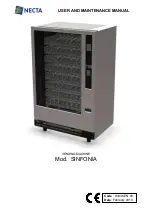
21
Using Seam Guides
The seam guides on the needle plate and the hook cover
plate help you to measure seam allowance.
The numbers on the needle plate indicate the distance
from the center needle position in inches and millimeters.
q
Center needle position
The front seam guides are marked at 1/4˝, 3/8˝ and
5/8˝ from the center needle position.
w
Front seam guide at 1/4˝
e
Front seam guide at 3/8˝
r
Front seam guide at 5/8˝
The angle scales are marked at 45, 60, 90 and 120
degrees.
Use the angle scales when seaming patchwork pieces
(refer to page 45).
t
Angle scales
Turning a square corner
To maintain a 5/8˝ seam allowance after turning a square
corner, use the cornering guide on the needle plate.
y
Cornering guides
Stop sewing when the front edge of fabric reaches the
cornering guides.
Raise the presser foot and turn the fabric 90 degrees.
Start sewing in a new direction.
y
5/8˝
y
w
e
r
y
t
q
















































